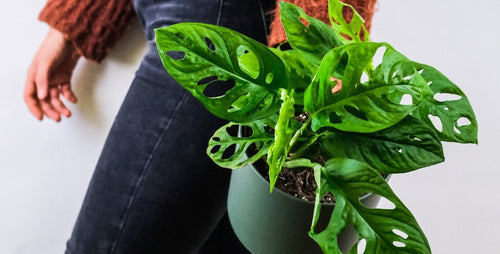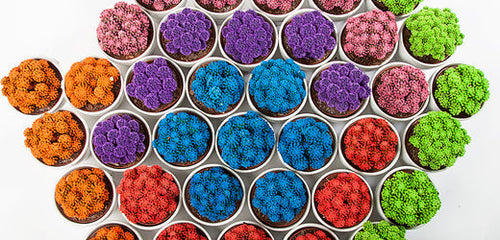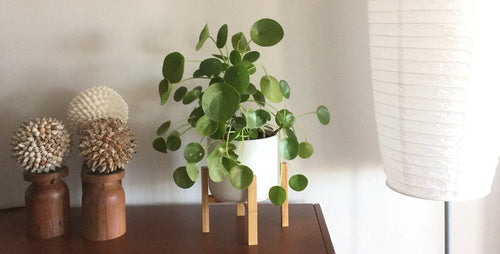
Red Aglaonema
Bold color doesn't have to come from flowers! Red aglaonema is showy because the leaves are streaked and stripped with shades of bright red and pink. Red aglaonema outlasts cut flowers -- it's one of the easiest houseplants to grow -- your loved one can enjoy it for years!
Grow red aglaonema anywhere from low light to high. It appreciates ample relative humidity, but tolerates drier air with ease. Water when the top inch or two of the potting mix dries.

Anthurium
Also called flamingo flower, this plant practically exudes love: Both the leaves and flowers are heart shaped! Anthurium is a long-lived houseplant; with proper care, puts on a show for years. The flowers are long-lasting, too -- with enough warmth and humidity, each bloom can last for months. What's better, anthuriums bloom on and off all year in the right conditions.
Grow anthurium in a bright spot indoors with abundant humidity. Water when the top inch or so of the potting mix dries. Fertilizing with a general-purpose houseplant fertilizer a few times a year can help you get more flowers.

Orchid
Orchids are an elegant choice for showing someone special you're thinking of them. Moth orchids have long-lasting flowers (they can remain in bloom for more than three months) in graceful shapes that dance along the bloom stalks like butterflies. Happily, they're a cinch to care for, too: Moth orchids like the same conditions most other houseplants do.
Grow moth orchids in a low- or medium-light spot (bright light is fine if they're protected from too much hot, direct sun) and water when the moss or bark dries out (usually once a week or two). Fertilizing in spring or summer can help produce a better bloom display, but typically isn't necessary.

Nerve Plant
It may not have a very romantic name, but its bright red or pink leaf variegation makes nerve plant a colorful plant for the season. Nerve plant is a long-lived houseplant in the right conditions, and is a perfect candidate for terrariums.
Grow nerve plant in a medium to bright spot where there's high humidity. If the air gets too dry, the plant's leaves may develop brown, crispy edges. It loves the same conditions as anthurium; make a fun combo by planting these beauties together!

Polka Dot Plant
With its dark green leaves playfully splashed with red, pink, or white speckles, polka-dot plant is a fun living gift to show how much you care. Polka-dot plant is easy to grow, but often looks best with a regular (monthly or so) haircut to keep it compact.
Grow polka-dot plant in a medium to bright spot. It likes abundant relative humidity, but tolerates average humidity well. If the air is too dry, however, the leaves may show brown, crispy edges. Water when the top inch or so of the soil is dry to the touch. It's a good companion for nerve plant.

Bromeliad
Bold and exotic bromeliads are a showstopping way to say how much you care. These pineapple relatives have strappy green leaves and are topped by an attention-grabbing stalk of red, pink, purple, orange, yellow, or white flowers. Some also offer attractively variegated leaves.
Grow bromeliads in a bright, humid spot. Low humidity can cause leaf tips to turn brown. Water when the top inch of the potting mix dries to the touch.

Desert Gems
Desert Gems is a new collection of brightly colorful cacti. While they're also available in orange, yellow, and green, the ruby-red and amethyst-purple varieties are most in-line with the Valentine's season.
Grow Desert Gems in a bright spot. Water once every two or three weeks; enough to keep the plants from shriveling.

Succulents
Succulents are super trendy and easy to care for --- so why not give them as a gift to someone special? There's a huge variety of succulents available; some of the cutest are echeverias that look like little silvery stars brushed with pink.
Grow succulents in a bright spot. Water once every two or three weeks. If you're unsure of watering, it's better to give them too little moisture than too much.
See More of Our Slideshows
Our Favorite Flowering Houseplants
The Best Low-Light Houseplants
Terrarium Ideas
Best Houseplant Trees
See How Houseplants Make You Healthier

















